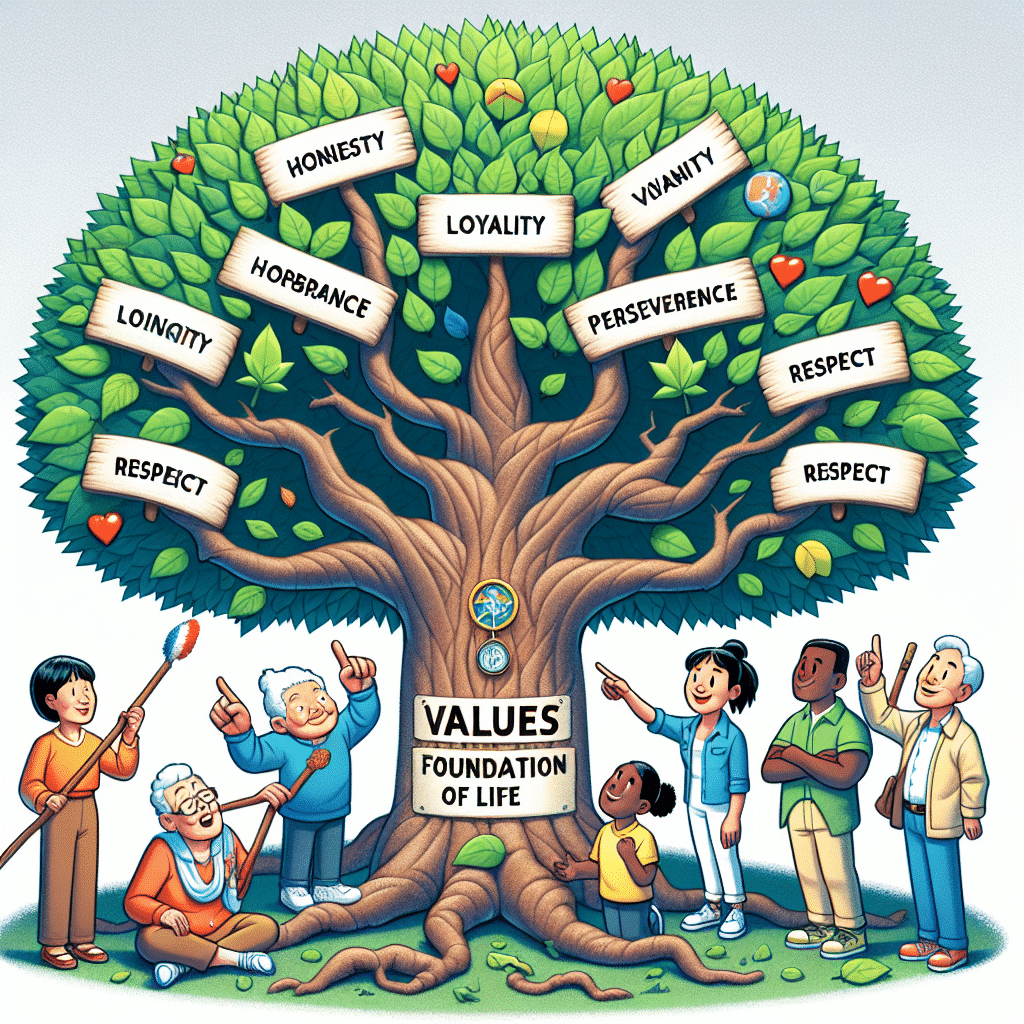
If you’re a busy professional looking to reduce stress, improve focus, and enhance your overall well-being, meditation can be a game-changer. In this blog post, we will explore meditation strategies specifically designed for professionals like you. From its numerous benefits to practical tips on getting started, we’ll guide you through the different types of meditation and provide solutions for common challenges. Discover how incorporating meditation into your daily routine can transform your professional life and help you find greater peace and clarity amidst the demands of your work. Let’s dive in and explore the world of meditation for professionals.
Benefits of Meditation for Professionals
Meditation is not just for yogis and spiritual gurus. It has increasingly gained recognition as a powerful tool for professionals to enhance their performance, manage stress, and improve overall well-being. Here are some key benefits of incorporating meditation into your daily routine:
- Reduced Stress: The fast-paced, high-pressure nature of the professional world can lead to chronic stress. Meditation helps activate the body’s relaxation response, reducing stress hormones and promoting a sense of calm and inner peace.
- Improved Focus and Concentration: With the constant demands and distractions of the workplace, maintaining focus can be challenging. Regular meditation practice improves attention span and cognitive function, allowing you to stay present and focused on your tasks.
- Enhanced Emotional Well-being: Work can often bring up a range of emotions, from frustration to anxiety. Meditation helps cultivate emotional resilience and equanimity, enabling you to respond to challenging situations with clarity, empathy, and composure.
- Better Decision-Making: Clarity of mind is essential for making sound decisions. Meditation enhances mindfulness, the ability to be fully present and aware of your thoughts and surroundings, enabling you to make better judgments and choices.
- Increased Productivity: By cultivating a focused and clear mindset, meditation can improve productivity and efficiency. It helps reduce mental clutter, enhances creativity, and allows you to prioritize tasks effectively.
- Improved Work-Life Balance: Finding a balance between work and personal life is crucial for overall well-being. Meditation helps create a sense of inner harmony, allowing you to detach from work-related stress and experience greater satisfaction in all areas of life.
These are just a few of the many benefits that meditation can offer professionals. By dedicating a few minutes each day to meditation, you can experience these positive changes in your work and personal life.
How to Start Meditating
Starting a meditation practice can seem daunting, especially for busy professionals. However, incorporating meditation into your daily routine doesn’t have to be complicated or time-consuming. Here are some simple steps to get started:
- Find a comfortable space: Choose a quiet and peaceful space where you can sit undisturbed for a few minutes. It could be a designated meditation corner in your home or a quiet spot in your office.
- Set a regular time: Consistency is key when it comes to meditation. Identify a time that works best for you, whether it’s in the morning, during a lunch break, or in the evening before bed.
- Get into a comfortable position: You can sit on a cushion, a chair, or even lie down if it helps you relax. The important thing is to find a position that allows you to be both relaxed and alert.
- Focus on your breath: Bring your attention to your breath. Notice the sensation of each inhale and exhale, and let your breath be your anchor in the present moment.
- Be patient and non-judgmental: It’s natural for your mind to wander during meditation. Whenever you notice your thoughts drifting, gently bring your focus back to your breath without judgment. Remember, meditation is a practice that requires patience and self-compassion.
- Start with short sessions: Begin with just a few minutes of meditation and gradually increase the duration as you become more comfortable. Even a few minutes of meditation each day can make a difference.
- Explore guided meditations: If you find it challenging to meditate on your own, you can use guided meditation apps or websites that provide audio recordings to help you focus and relax.
Remember, the most important aspect of meditation is regular practice. Consistency is more valuable than the length of each session. Start small, be patient with yourself, and slowly build your meditation practice over time.

Types of Meditation
There are various types of meditation that you can explore to find what resonates with you. Here are a few popular types:
- Mindfulness meditation: This involves focusing your attention on the present moment, observing your thoughts and sensations without judgment.
- Loving-kindness meditation: This practice involves cultivating feelings of love, compassion, and kindness towards oneself and others.
- Transcendental meditation: In this practice, you repeat a mantra silently to yourself, allowing your mind to settle and experience a deep state of relaxation.
- Body scan meditation: This involves systematically directing your attention to different parts of your body, noticing any sensations or tensions, and releasing them.
- Guided visualization: This type of meditation involves imagining vivid and positive scenarios to help you relax and focus your mind.
- Breathing meditation: Focusing on your breath is a common and accessible form of meditation. You can count your breaths, observe the breath entering and leaving your body, or use specific breathing techniques.
These are just a few examples, and there are many other meditation techniques and variations to explore. The key is to find what resonates with you and supports your personal growth and well-being.
Don’t be afraid to experiment and try different types of meditation. What works for one person may not work for another. The goal is to find a practice that resonates with you and helps you cultivate a sense of inner peace and clarity.
Practice Tips for Meditation
Here are some practical tips to help you establish and maintain a regular meditation practice:
- Start with short sessions: Begin with a few minutes of meditation and gradually increase the duration as you become more comfortable.
- Find a quiet space: Choose a quiet and peaceful environment where you can meditate without distractions.
- Commit to a regular schedule: Set aside dedicated time each day for your meditation practice. Consistency is key to experiencing the benefits of meditation.
- Use guided meditations: If you’re new to meditation or find it challenging to focus, utilize guided meditation apps or recordings to help you stay on track.
- Experiment with different postures: Explore different seated positions, such as cross-legged or sitting on a cushion, and find a posture that is comfortable for you.
- Focus on the breath: Using the breath as an anchor can help you stay focused during meditation. Pay attention to the sensation of your breath entering and leaving your body.
- Be patient and kind to yourself: Meditation is a practice, and it takes time to develop. Be patient with yourself and approach your practice with a sense of self-compassion.
- Be open to the experience: Allow yourself to be present and open-minded during meditation. Avoid judging your thoughts or experiences; simply observe them with curiosity and non-attachment.
- Seek support: Consider joining a meditation group or participating in a mindfulness course to deepen your practice and connect with others on a similar journey.
- Integrate mindfulness into daily life: Take the skills and insights gained from meditation and apply them to your everyday activities, such as mindful eating or mindful walking.
Remember, the most important aspect of meditation is showing up and making the commitment to practice. With time and dedication, you can cultivate a regular meditation practice that supports your personal growth and well-being.
Troubleshooting Common Challenges
While meditation can be a transformative practice, it is not without its challenges. Here are some common difficulties that practitioners may encounter and how to navigate them:
- Restlessness: If you find it difficult to sit still or calm your mind, try incorporating movement into your meditation practice. Consider walking meditation or exploring active meditation techniques.
- Distractions: It’s normal for the mind to wander during meditation. When you notice your attention drifting, gently bring it back to your chosen focus, such as your breath or a mantra.
- Impatience: Many people expect immediate results from meditation. Remember that meditation is a gradual process, and the benefits may take time to manifest. Stay committed to your practice and trust in the process.
- Resistance: Resistance can arise when we encounter uncomfortable emotions or thoughts during meditation. Instead of pushing them away, try to approach them with curiosity and understanding. Embrace acceptance and allow these experiences to pass without judgment.
- Inconsistency: Maintaining a regular meditation practice can be challenging. Consider setting reminders, creating a designated meditation space, and establishing a routine to make meditation a consistent part of your life.
- Expectations: Let go of any preconceived notions or expectations about meditation. Each practice session is unique, and it’s important to approach it with an open mind and without judgment.
- Comparison: Avoid comparing your meditation practice to others. Remember that everyone’s journey is different, and there is no “right” or “wrong” way to meditate. Focus on your own progress and growth.
- Self-criticism: Be kind and compassionate to yourself throughout your meditation practice. Notice any self-critical thoughts that arise and gently redirect your focus back to your practice.
- Seeking guidance: If you feel stuck or need additional support, consider seeking guidance from a meditation teacher or attending a meditation retreat. Their expertise can provide valuable insights and deepen your practice.
- Persistence: Remember that meditation is a lifelong practice. It may have its ups and downs, but persistence and a commitment to your self-care will help you overcome challenges and experience the transformative benefits of meditation.
By addressing these common challenges and adjusting your approach as needed, you can continue to develop and deepen your meditation practice, allowing it to become a source of inner peace, clarity, and personal growth.

Embrace the Journey Towards Inner Peace
Embarking on a journey of self-discovery and inner peace through meditation is a powerful and transformative process. As you explore the various techniques, benefits, and challenges of meditation, remember that it is a journey unique to you. Embrace the process and be patient with yourself as you navigate the waves of your mind.
Through regular practice and self-reflection, you can cultivate mindfulness, reduce stress, and find a sense of calm amidst the chaos. Remember that meditation is not a quick fix, but rather a lifelong practice that requires dedication, discipline, and self-compassion. Embrace the ups and downs, knowing that each moment of stillness and awareness contributes to your personal growth and well-being.
As you continue on your path, remember to be gentle with yourself and celebrate even the smallest victories. Find support in meditation communities, teachers, or apps that can provide guidance and inspiration along the way. Trust in the process and allow yourself to be present with the experience of each breath.
May your journey towards inner peace be filled with self-discovery, transformation, and an unwavering commitment to self-care and well-being.






